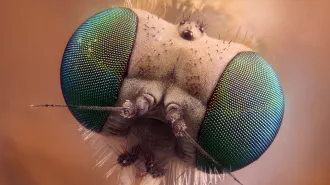Genes & Cells
A look at how ovarian cancer spreads, plus clues to aging and immune links to cancer in this week’s news
New clues from premature aging
An abnormal protein that builds up in children with a premature aging disease may also play a role in normal aging. Francis Collins of the National Institutes of Health and colleagues show that as normal cells stop dividing and become inactive — a condition called senescence — progerin, a protein linked to Hutchinson-Gilford progeria syndrome, can build up. But the buildup happens only in cells in which telomeres, the protective caps at the end of chromosomes, are shortened, damaged or lost, the researchers report online June 13 in the Journal of Clinical Investigation. —Tina Hesman Saey
When immune cells promote cancer
The immune system is supposed to seek out and destroy cancer, but some immune cells apparently didn’t get the memo. White blood cells called macrophages normally help whip the immune system into a protective frenzy. But macrophages that produce a protein called Foxp3 do the opposite, suppressing the immune reaction and creating conditions that helps tumors grow, an international team of researchers reports online June 13 in the Journal of Experimental Medicine. The foxy macrophages can draw healthy immune cells over to the dark side, converting them into Foxp3 producers, too. —Tina Hesman Saey







